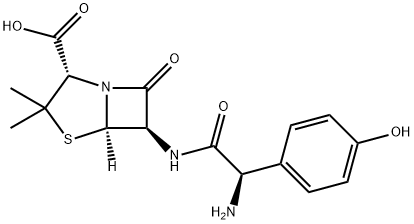D-Penicillamine , >98.0%(T) , 52-67-5
Synonym(s):
D- (−)-2-Amino-3-mercapto-3-methylbutanoic acid;D -Penicillamine;3,3-Dimethyl-D -cysteine;3-Mercapto-D -valine
CAS NO.:52-67-5
Empirical Formula: C5H11NO2S
Molecular Weight: 149.21
MDL number: MFCD00064302
EINECS: 200-148-8
| Pack Size | Price | Stock | Quantity |
| 5G | RMB151.20 | In Stock |
|
| 25G | RMB577.60 | In Stock |
|
| 100G | RMB1479.20 | In Stock |
|
| others | Enquire |
PRODUCT Properties
| Melting point: | 210 °C (dec.)(lit.) |
| Boiling point: | 251.8±35.0 °C(Predicted) |
| alpha | -65 º (c=5, 1M NaOH, on dry) |
| Density | 1.113 (estimate) |
| refractive index | -63 ° (C=1, 1mol/L NaOH) |
| storage temp. | 2-8°C |
| solubility | H2O: soluble100mg/mL |
| form | Powder |
| pka | pKa 7.83±0.01(H2O,t =37±0.05,I=0.15)(Approximate) |
| color | White to almost white |
| optical activity | -6325 (pyridine), L-form: +6325 (1 mol dm-3 NaOH) |
| Water Solubility | 11.1 g/100 mL (20 ºC) |
| Merck | 14,7088 |
| BRN | 1722375 |
| BCS Class | 3 |
| Stability: | Stable. Incompatible with strong oxidizing agents. |
| InChIKey | VVNCNSJFMMFHPL-VKHMYHEASA-N |
| CAS DataBase Reference | 52-67-5(CAS DataBase Reference) |
| NIST Chemistry Reference | Penicillamine(52-67-5) |
| EPA Substance Registry System | Penicillamine (52-67-5) |
Description and Uses
Penicillamine is an orally bioavailable copper chelator and penicillin degradation product. It increases urinary and fecal copper excretion and decreases liver copper concentration in a rat model of copper overload when administered at 0.67 mmol/kg per day, but does not affect kidney, spleen, or brain copper levels. Penicillamine (100 mg/kg per day) dissolves copper-rich granules in hepatic lysosomes of Long-Evans cinnamon (LEC) rats, which spontaneously develop hepatic injury and acute hepatitis and have a mutation homologous to that of the human Wilson disease gene. Penicillamine has anticonvulsant and proconvulsant effects in mice when administered at 0.5 and 250 mg/kg, respectively, which are blocked by the nitric oxide synthase (NOS) inhibitors L-NAME and 7-nitroindazole . Formulations containing penicillamine have been used to treat Wilson disease, cystinuria, and active rheumatoid arthritis.
chelating agent (Cu), antirheumatic
Safety
| Symbol(GHS) |  GHS08 |
| Signal word | Warning |
| Hazard statements | H361d |
| Precautionary statements | P201-P202-P280-P308+P313-P405-P501 |
| Hazard Codes | Xi,T,Xn |
| Risk Statements | 36/37/38-40-20/21/22 |
| Safety Statements | 26-36-24/25-22 |
| WGK Germany | 2 |
| RTECS | YV9425000 |
| Hazard Note | Toxic |
| HS Code | 29309016 |
| Hazardous Substances Data | 52-67-5(Hazardous Substances Data) |
| Toxicity | LD50 in rats (mg/kg): >10000 orally, >660 i.p. (Jaffe) |





